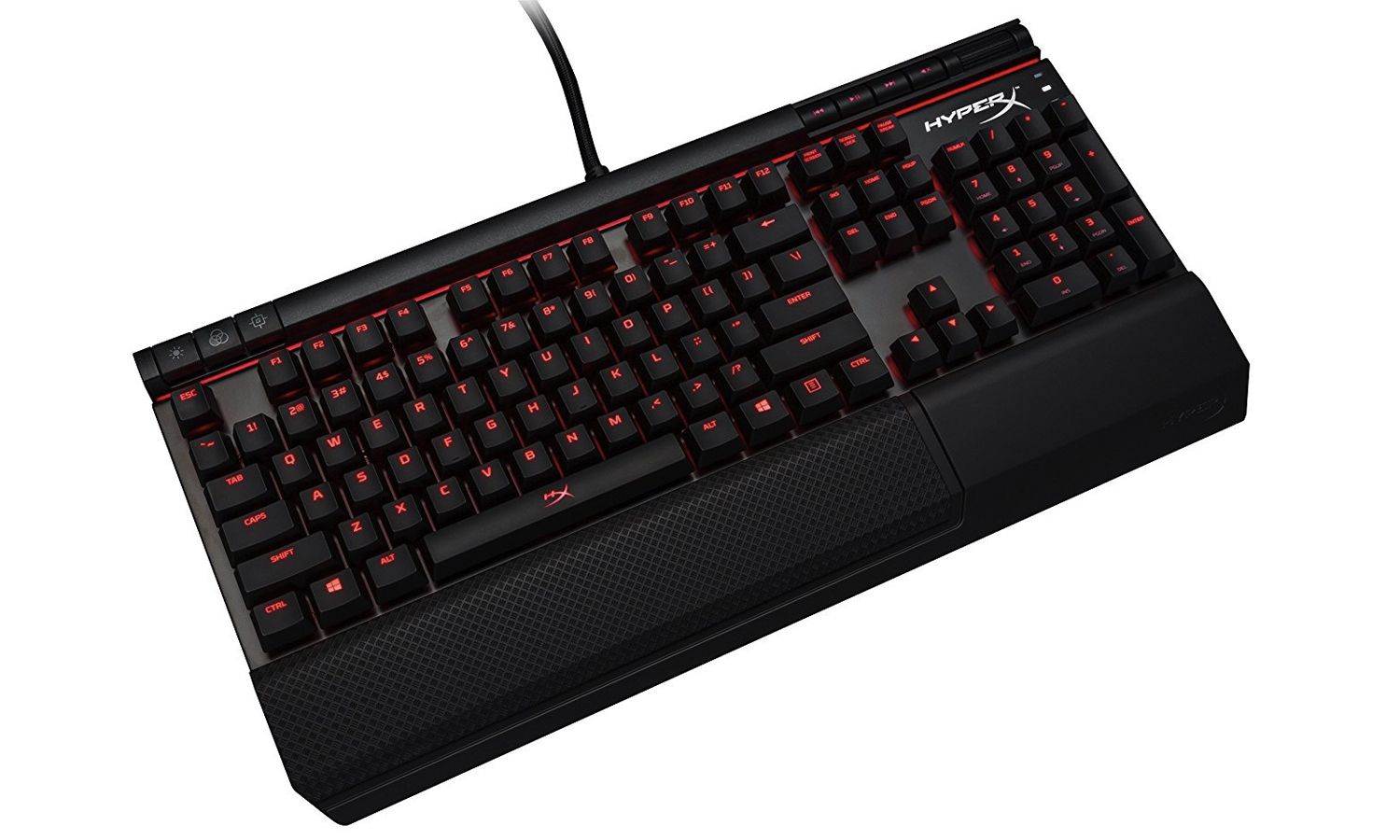Tom's Guide Verdict
The HyperX Alloy Elite has a spacious design, authentic Cherry MX keys, dedicated media controls and an interface that requires no software.
Pros
- +
Authentic Cherry MX keys
- +
Smart design
- +
Discrete media keys
- +
Great performance
Cons
- -
Garish backlighting
- -
So-so pricing
Why you can trust Tom's Guide
Fellow '90s kids may remember an episode of Rocko's Modern Life in which the hapless protagonist attempts to buy a new TV. His heart's desire is a model called "Mr. Sensible," a small, affordable set that would fit perfectly in his living room (and that, naturally, gets replaced with an exorbitant monstrosity). When I tested the $110 HyperX Alloy Elite mechanical gaming keyboard, Mr. Sensible was the first thing that sprang to mind.
The Alloy Elite has it all: a spacious design, authentic Cherry MX keys, dedicated media controls and an interface that requires absolutely no software. The red backlighting is a bit garish, and its lack of software also means a lack of programmable buttons. Still, these are relatively minor gripes for a keyboard that delivers everything the average gamer needs and almost nothing he or she doesn't.
Design
The Alloy Elite is about as elegant as they come. The square key caps take up most of the keyboard's rectangular body, with only a few small gaps to maintain even spacing. A bar above the Function keys has dedicated keys for media, brightness, lighting patterns and game mode (which disables the Windows keys and Alt-Tab during games). There's also a removable wrist rest down below that was, in my experience, quite comfortable.
What impressed me about the Alloy Elite is that there's essentially no wasted space on it. If your gaming setup has room for a full-size keyboard, the Alloy Elite will fit comfortably in it — and if you have to forgo the wrist rest, it's easy enough to remove. The red backlighting means it may not mesh with your room (more on that later), but in terms of sheer physical appearance, it's hard to see how HyperX could have improved on the Alloy Elite.
Keys
You can purchase the Alloy Elite with either clicky, tactile Cherry MX Blue keys or quiet, linear Cherry MX Red keys. While it's disappointing that the quiet, tactile Cherry MX Brown keys aren't offered, the Reds and Blues ought to please most people. While other mechanical switches from Razer and Logitech are inching closer to Cherry quality, nothing beats the originals, and Cherry is still at the top of the mechanical key switch market.

I used TypingTest.com to evaluate the Alloy Elite, and found that I could type 126 words per minute with seven errors. For comparison, with my Logitech G810 Orion Spectrum, I typed 119 words per minute with seven errors. For people who wonder whether Cherry keys are really more effective, wonder no longer.

The discrete media keys, including a volume dial, are also a nice touch. Having pause, play, skip and volume buttons simplifies things so much. It's positively baffling to me that some keyboards that cost more than $100 insist on secondary function button commands instead.
Features
Because the Alloy Elite does not use any proprietary software, its only real features are a few lighting patterns, the game mode and its discrete media keys. The lighting patterns are not terribly interesting, and the red backlighting is a divisive choice. Red-and-black gaming setups are all the rage right now (at least if you ask PC manufacturers), but blue, green, gray or white color schemes are just as common, and perhaps more so. The red backlighting isn't bad, per se, but it limits your gaming nook's cohesion potential.

Not having to deal with software is a boon, since as soon as you plug in the keyboard, it's good to go. (There's even a USB pass-through, which is either very useful or total superfluous, depending on your setup.) On the other hand, because you can't program macros or reprogram any of your keys, the Alloy Elite may not be as versatile as comparable keyboards from companies such as Logitech, Razer and SteelSeries. I was fine with the trade-off, but it's worth thinking about.
Performance
With a smart layout and Cherry MX keys, the Alloy Elite performs spectacularly in both low- and high-stakes gaming scenarios. I tested it with a variety of games to see how it held up to both furious key pounding and laid-back tapping, and it excelled in both categories.
MORE: Keyboards - Articles and Forums on Tom's Guide
In heated competitive games such as Heroes of the Storm, the Alloy Elite mapped my keystrokes accurately and instantly, and didn't have any trouble with rollovers or multiple keystrokes. In more measured experiences, like Hex: Shards of Fate, a single light tap could set my attackers against my opponents. Whether I was slaying demons in Diablo III or trying out new characters in Overwatch, the Alloy Elite was a reliable companion.
Bottom Line
HyperX hasn't been producing keyboards for very long, which only makes it more impressive that the Alloy Elite is so good. While it's not as deeply customizable as some of its competitors, and the backlighting will not suit everyone's taste, its fundamentals are beyond solid. The keys, layout and performance are all top-notch.
The price could be a sticking point for some gamers; after all, you could get a Logitech G413 keyboard for $90, or a Corsair Strafe (with Cherry MX keys) for $100. Then again, if discrete media keys are worth their weight in gold to you, they should at least be worth the price of a budget game.
Marshall Honorof is a senior editor for Tom's Guide, overseeing the site's coverage of gaming hardware and software. He comes from a science writing background, having studied paleomammalogy, biological anthropology, and the history of science and technology. After hours, you can find him practicing taekwondo or doing deep dives on classic sci-fi.


